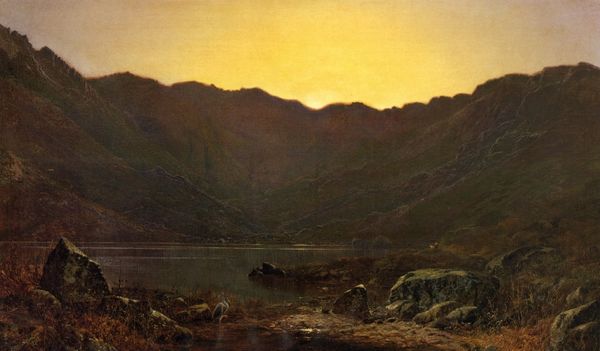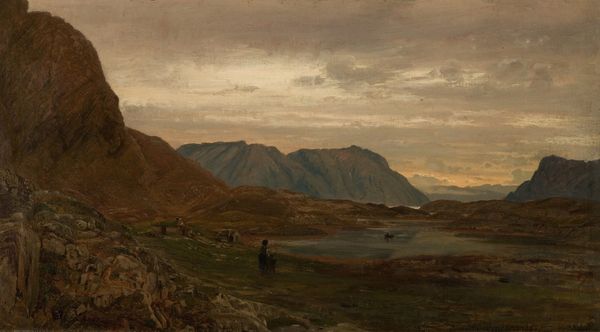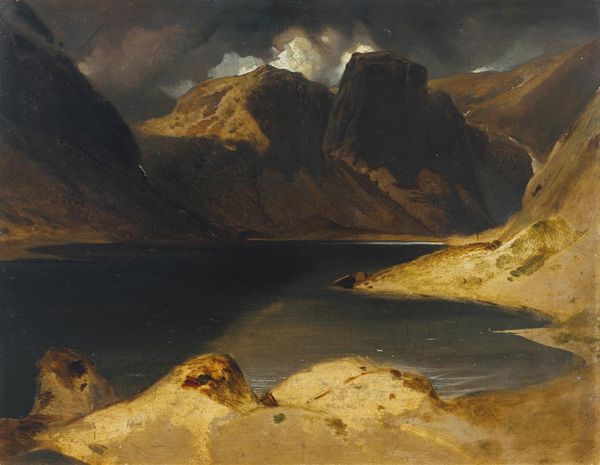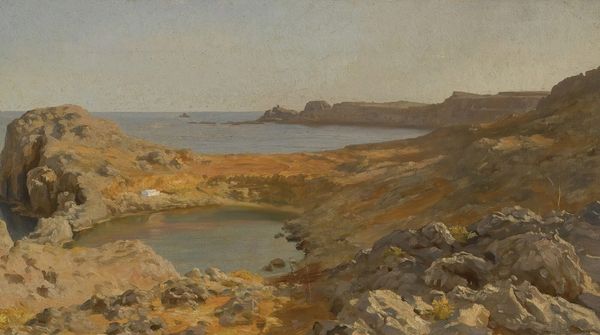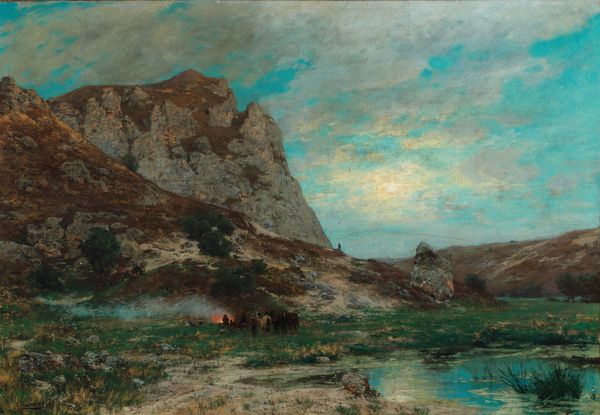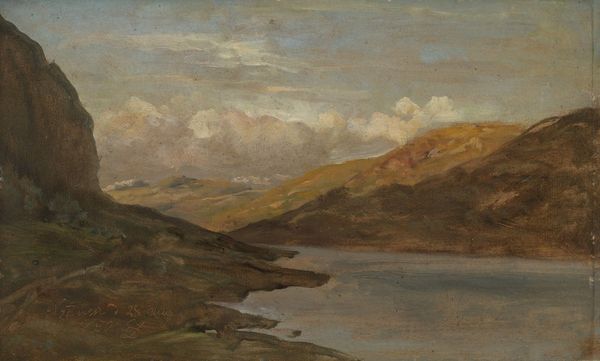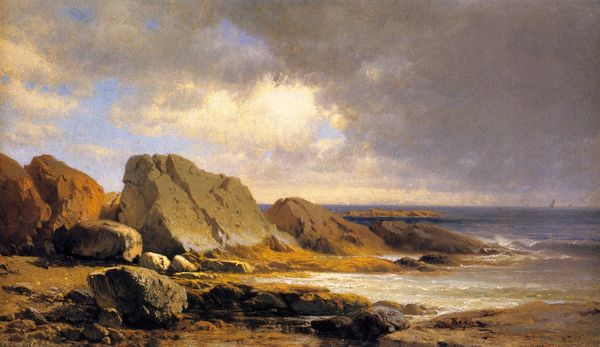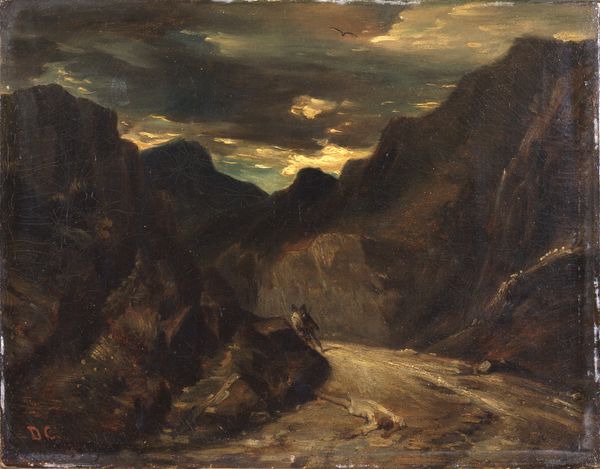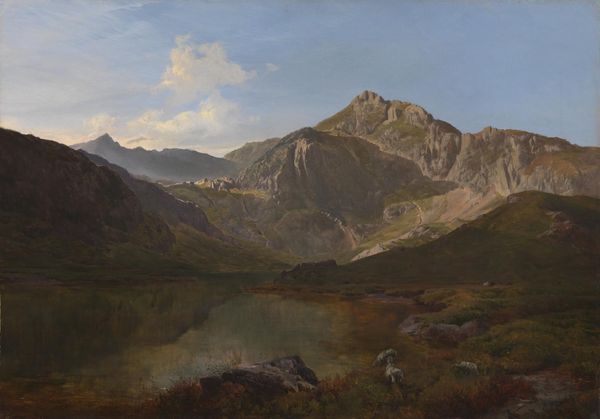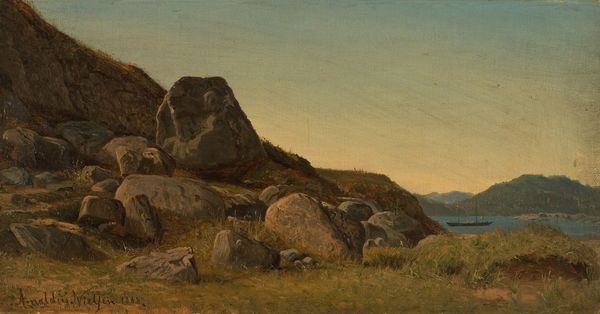
painting, oil-paint, impasto, oil-on-canvas
#
painting
#
oil-paint
#
landscape
#
impressionist landscape
#
oil painting
#
impasto
#
romanticism
#
seascape
#
oil-on-canvas
#
realism
Dimensions: 13 1/16 × 17 1/16 in. (33.2 × 43.4 cm)
Copyright: Public Domain
Theodore Rousseau painted this landscape using oil on wood, but the date remains unknown. Rousseau belonged to the Barbizon School, which was a group of artists dedicated to painting en plein air, meaning "in open air." This art movement emerged in response to the Industrial Revolution in France, as rapid industrialization disrupted rural life and traditions. The painting may seem to represent a timeless vision of nature, but its creation was very much rooted in a specific historical moment. We might consider it as a form of environmental activism. Rousseau's landscape also reflects a romanticized view of rural life. The figures that appear in the landscape are small and almost anonymous. Who are they? What labor is required to maintain the fields and tend the animals? Rousseau doesn't seem interested in these types of questions. Instead, he offers a version of the landscape as a form of respite and escape. By emphasizing nature's beauty, Rousseau's landscape embodies a yearning for a simpler, pre-industrial past, tinged with both hope and a touch of melancholy.
Comments
No comments
Be the first to comment and join the conversation on the ultimate creative platform.
